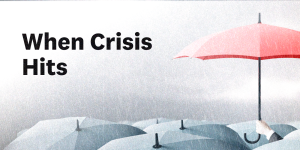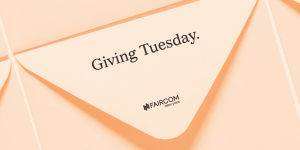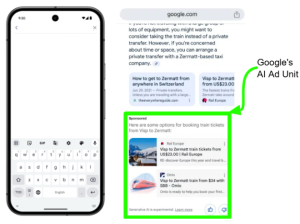Welcome to Part 2 of our exploration into optimizing your direct marketing donor journey, where we dive deeper into the transformative strategies that can enhance each stage of donor engagement.
In Part 1, we laid the groundwork by mapping the critical path from awareness to advocacy, examining each interaction through the lens of direct marketing. We discussed how personalized, data-driven approaches not only reach but resonate with potential donors, creating a robust foundation for meaningful relationships. We delved into the importance of capturing attention through compelling narratives and the tactical use of tracking elements makes those initial connections memorable and effective.
Get ready to explore advanced techniques that can further refine these interactions, turning fleeting engagements into lasting commitments and transforming potential donors into passionate advocates for your cause. Each step forward is a step towards harnessing the full power of direct marketing, driving both your mission and your message home with unprecedented clarity and impact. Let’s continue this journey, embracing the tools and strategies that await in the next stages of your direct marketing donor journey.
Stage 2: Optimizing the Engagement Stage
Once you’ve captured the attention of current and potential supporters, the next step is to deepen that connection during the Engagement stage. With interest piqued, the focus shifts to nurturing that connection. Work with your marketing partners on follow-up communications that provide more detailed information about your mission, introduce key initiatives, and invite recipients to events or webinars. Including testimonials or volunteer stories can further build trust and credibility.
This phase is where relationships are truly forged, turning casual interest and singular giving into active participation and commitment. Here, the power of technology can be transformative, enabling nonprofits to create interactive, personalized, and impactful experiences that keep supporters engaged and inspired.
3 Ways to Optimize the Engagement Stage
1. Utilize Ai-Driven Personalization
Artificial Intelligence (Ai) can take personalization to the next level. Ai algorithms analyze a myriad of data points—from social media behavior to past interactions—to tailor content that resonates with each individual. Whether it’s personalized thank you letters, emails, or targeted donation appeals, Ai helps you speak directly to the interests and passions of your supporters.
2. Implement Omnichannel Interactive Technologies
Engagement is most effective when it’s interactive and extends across multiple channels. By reaching donors where they are and may feel most comfortable, you are deepening the donors’ relationships with your organization and layering on new experiences to their journey. Innovative technologies like video messages, gamification, and quiz-like surveys add new touchpoints to traditionally static communication. Offer a way to register for virtual tours and live Q&A sessions to give your audience a front-row seat to the impact of your work.
3. Reward Engagement With … Rewards
By offering badges, points, or exclusive content as rewards for participation, nonprofits can transform donor engagement, creating a dynamic and interactive environment where supporters feel valued and deeply connected to the cause. These elements not only recognize and celebrate achievements but also foster sustained involvement and transform donors into well-informed advocates with privileged access to the mission’s impact.
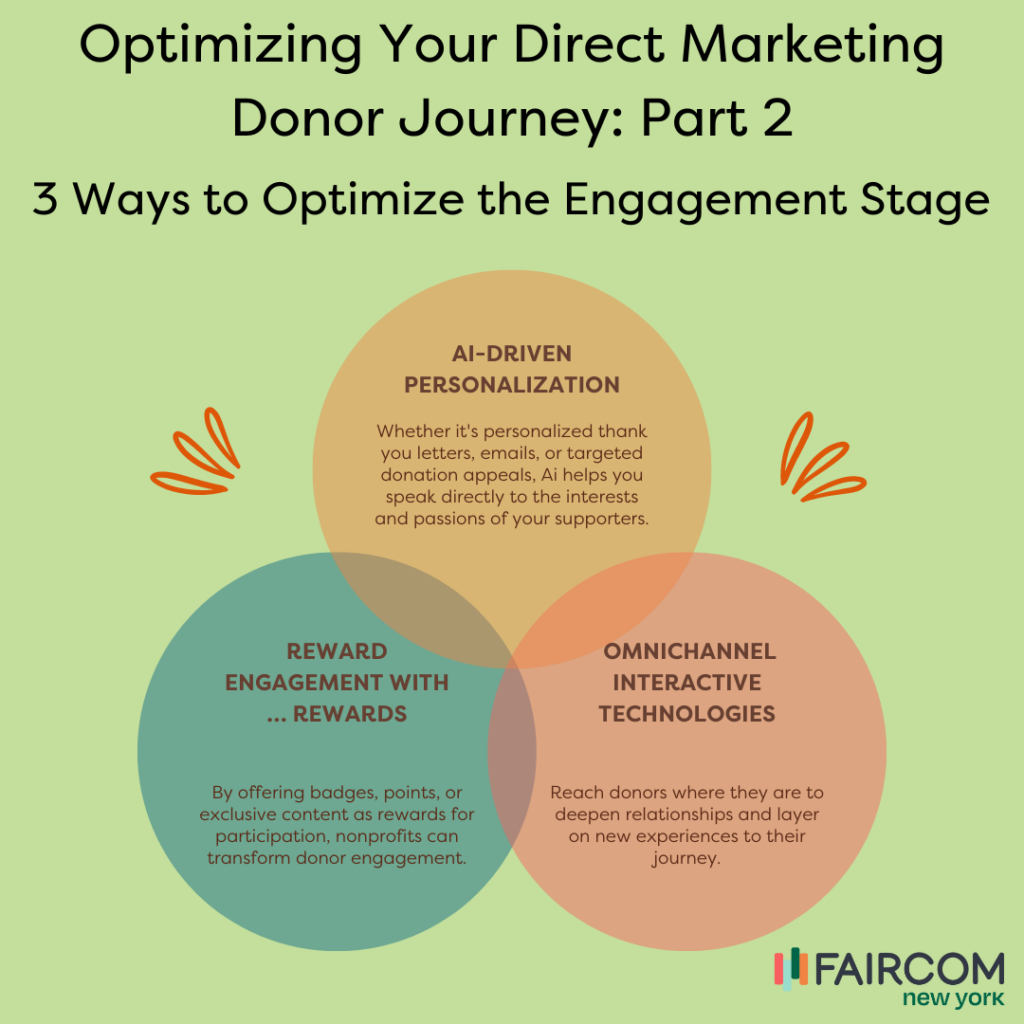
Stage 3: Optimizing the Conversion Stage
Here, the goal is to convert engaged prospects and single-gift or emergency donors into committed annual supporters through multiple direct marketing channels. Clear, compelling calls-to-action (CTAs) are crucial. It’s the stage where interest and interaction transform into tangible support—be it donations, volunteer sign-ups, or advocacy actions. For nonprofits, mastering this phase is crucial to achieving their mission-driven goals.
3 Ways to Optimize the Conversion Stage
1. Implement Prescriptive Analytics for Targeted Outreach
Prescriptive analytics harnesses the power of your data and Machine Learning to forecast which supporters are most likely to convert and which methods will most effectively prompt that action. By analyzing past behavior, interactions, and demographic information, prescriptive analytics provides structured audience segments and creative guidance (think messaging, font, paperweight, and color themes) with pinpoint accuracy.
2. Integrate Direct Mail with Digital for Omnichannel Marketing Strategies
Adopting an omnichannel marketing approach ensures that nonprofits reach donors through various communication channels throughout their lifecycle. This approach not only broadens your organization’s audience capacity but also increases the chances of engaging donors at different touchpoints, leading them to conversion.
3. Highlight Efficiency and Fiscal Responsibility
Emphasizing your organization’s commitment to efficiency and fiscal responsibility builds trust and could be the deciding factor for when a donor decides to give. First, highlight how your nonprofit maximizes the impact of each dollar donated by carefully managing resources and reducing unnecessary expenses. Second, demonstrate transparency by sharing clear financial reports and providing examples of how funds are allocated toward mission-critical activities. Lastly, communicate the value of donations by showing how even small contributions can make a significant difference, thanks to the organization’s strategic planning and cost-effective operations. By prioritizing these elements, potential donors will feel confident that their contributions are being used wisely and effectively.
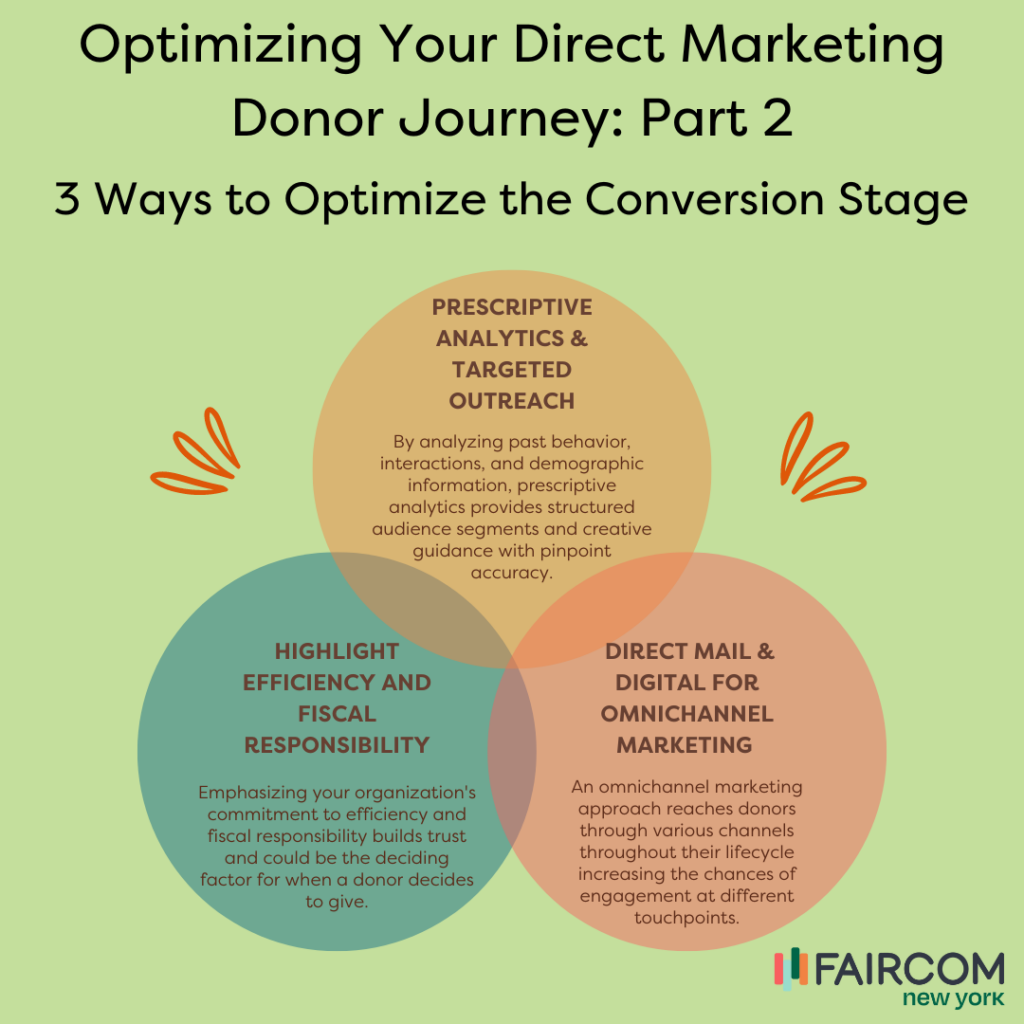
Wait, there’s more
Don’t forget to check out Part 1, where we explore why it’s important to understand the donor journey and how to optimize the all-important Awareness Stage.
And Part 3 will be available soon…Come back for more tips on optimizing the final stage, the Retention stage.

